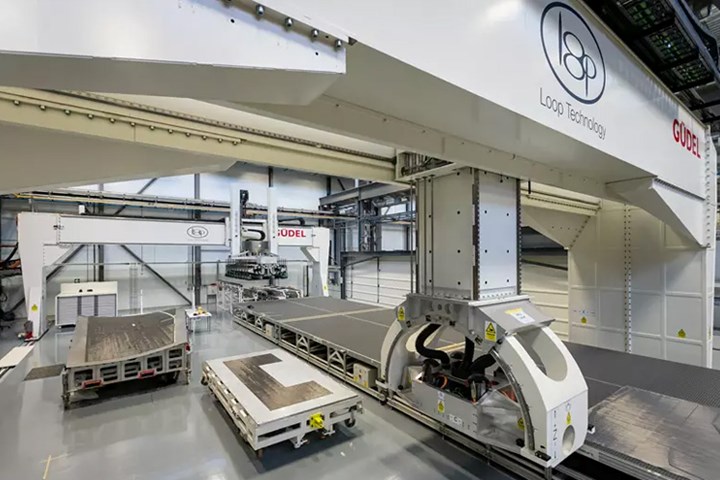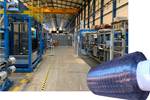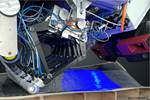Ultra high-rate composite deposition system trials to surpass layup targets
The NCC, alongside partners Loop Technology, Coriolis and Güdel, are on track to deliver dry fiber deposition rates exceeding 350 kilograms/hour, seven times more than standard aerospace rates.

Ultra high-rate composite deposition system (UHRCD). Photo Credit: NCC
(NCC, Bristol, U.K.) engineers, researchers, software architects, industrialists and textile experts, in collaboration with (Dorchester, U.K.) Coriolis (Queven, France) and (Langenthal, Switzerland), have designed and developed an ultra high-rate composite deposition system (UHRCD) in an effort to significantly increase the deposition volume of composite materials during manufacture and meet the needs of next-generation large composite structures.
The industrial technology demonstrator, procured as part of the £36 million capability acquisition program (iCAP), funded by the Aerospace Technology Institute (ATI), is “capable of challenging product cost, weight and operational improvements,” and can provide flexibility “in the design and development of future structures” according to the NCC’s . Development trials have already proven that the system is on track to delivering a dry fiber deposition rate in excess of 350 kilograms/hour, surpassing the project team’s original 200-kilogram/hour goal. The NCC compares these numbers to the 50 kilogram/hour standards known to aerospace automated fiber placement (AFP) volumes for large structures.
Additional development trials have been conducted to increase the positional accuracy and rate of deposition for noncrimp fabrics (NCFs). Some trials have also been conducted as part of the Wing of Tomorrow (WOT) project (learn more about that at the ).
The system, provided by Loop Technology, has five different heads that can be used in an integrated way to cut, lift and place dry fiber materials in accordance with design requirements, giving the team options to address different industrial challenges. For example, the dry fiber placement (DFP) head can deposit material from a single, 38-millimeter-wide slit tape up to eight strips in a single pass and Loop Technology’s FibreFORM head can deposit material up to 4 meters wide and manage a ply shape down to a knife point. The NCC believes this has the potential to dramatically reduce the number of fabric pieces required — speeding up production time and reducing costs.
Related Content
-
Wichita State, Dassault Systèmes open Manufacturing Innovation Center
Aviation companies of all sizes will be able to improve their resilience and efficiency via the center’s virtual design, automation and additive manufacturing capabilities.
-
Com&Sens presents workshop on fiber optic sensing for COPVs
Three-day hands-on workshop from June 11-13 in Leuven, Belgium, will equip participants with a better understanding of fiber optic sensing technology for digital manufacturing of composite tanks.
-
SAM XL demonstrates closed-loop digital methodologies via full-size aerocomposite parts development
PeneloPe Project’s modular, zero-defect manufacturing deliverables are being highlighted in an upcoming video that demonstrates the resulting aerospace pilot line’s feasibility.



